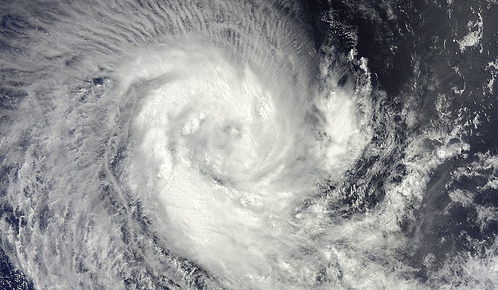Gli impatti che i cicloni tropicali hanno sulle nostre società rendono importante capire come le loro caratteristiche, dinamiche e tendenze potrebbero variare in futuro. Una rappresentazione realistica dell’andamento dei cicloni tropicali nell’Atlantico settentrionale è pertanto fondamentale dal momento che consente, per esempio, di illustrare i potenziali cambiamenti dei sistemi di “landfall” negli Stati Uniti.
In un nuovo studio pubblicato di recente sulla rivista Journal of Climate, un gruppo di scienziati (tra questi, anche il ricercatore CMCC E. Scoccimarro della Divisione CSP) ha indagato l’abilità dei più recenti modelli climatici di rappresentare l’andamento dei cicloni tropicali nell’Atlantico settentrionale.
L’articolo fa parte della speciale raccolta US CLIVAR Hurricanes and Climate special collection.
L’abstract dell’articolo:
A realistic representation of the North Atlantic tropical cyclone tracks is crucial as it allows, for example, explaining potential changes in US landfalling systems. Here we present a tentative study, which examines the ability of recent climate models to represent North Atlantic tropical cyclone tracks. Tracks from two types of climate models are evaluated: explicit tracks are obtained from tropical cyclones simulated in regional or global climate models with moderate to high horizontal resolution (1° to 0.25°), and downscaled tracks are obtained using a downscaling technique with large-scale environmental fields from a subset of these models. For both configurations, tracks are objectively separated into four groups using a cluster technique, leading to a zonal and a meridional separation of the tracks. The meridional separation largely captures the separation between deep tropical and sub-tropical, hybrid or baroclinic cyclones, while the zonal separation segregates Gulf of Mexico and Cape Verde storms. The properties of the tracks’ seasonality, intensity and power dissipation index in each cluster are documented for both configurations. Our results show that except for the seasonality, the downscaled tracks better capture the observed characteristics of the clusters. We also use three different idealized scenarios to examine the possible future changes of tropical cyclone tracks under 1) warming sea surface temperature, 2) increasing carbon dioxide, and 3) a combination of the two. The response to each scenario is highly variable depending on the simulation considered. Finally, we examine the role of each cluster in these future changes and find no preponderant contribution of any single cluster over the others.
Leggi la versione integrale dell’articolo:
Daloz A. S. , Camargo S. J. , Kossin J. P. , Emanuel K., Jonas J. A. , Horn M., Kim D., LaRow T. E. , Lim Y. K. , Patricola C. M. , Roberts M., Scoccimarro E., Shaevitz D., Viadale P. L. , Wang H., Wehner M. F. , Zhao M.
Cluster analysis of explicitly and downscaled simulated North Atlantic tropical cyclone tracks
2014, Journal of Climate, DOI: 10.1175/JCLI-D-13-00646.1




